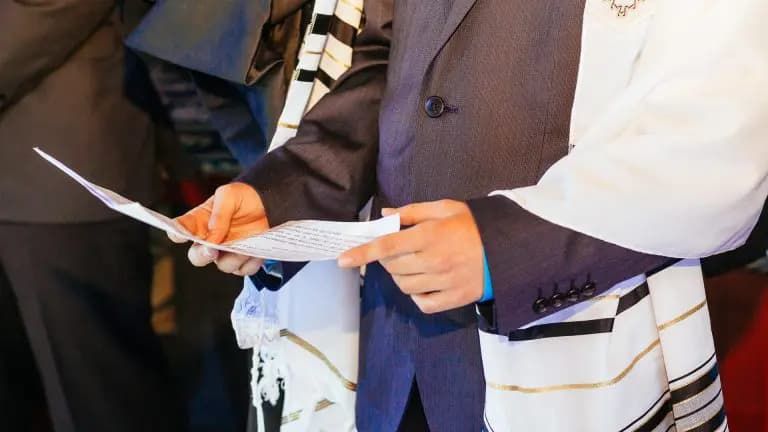Sephardic Jews in Colombia: Surnames and Genealogical Study to apply for Portuguese Nationality

In previous articles it was briefly stated what is the procedure and the requirements that must be fulfilled by the persons who wish to
[apply for Portuguese nationality by Sephardic origin, in accordance with Decree Law 30A/2015.](Portuguese Citizenship Sephardic | Servicio Legal S.A.S)
On this occasion, emphasis will be placed on one of them: the certificate of Sephardic ancestry, which must be issued by the Jewish communities of Porto and/or Lisbon.
Brief historical review
The Sephardic Jews are those who resided in the Iberian Peninsula, particularly in the territories of Spain and Portugal. In 1492 the Catholic Monarchs of Spain subjected the Jews to an intense inquisition and many took refuge in Portugal seeking protection; there they settled until, four years later, King Manuel I expelled those who did not submit to Catholic baptism. At the end of the 15th century and beginning of the 16th century there was a massive exodus of Jews who took refuge in Holland, the United Kingdom, Turkey, North Africa and in Latin American territories such as Brazil, Argentina, Mexico and Colombia.
They arrived in Colombia through the Caribbean Coast, in Cartagena, because that is where the ports were located. Many even arrived with the conquistadors under the garb of Christian converts, although in private they preserved their ancestral Judaic traditions. “The new Christians who arrived came from numerous villages, towns, cities, hamlets and countryside of Portugal, the Portuguese islands and the west coast of Africa; others were born in Spain and descended from Lusitanian parents.” The new Christians who arrived came from many villages, towns, villages and countryside of Portugal, the Portuguese islands and the west coast of Africa; others were born in Spain and descended from Lusitanian parents.”
 Despite the initial expulsion from Spanish territory, the Spanish crown decided to expand the Inquisition for “blood cleansing” to the Americas, so the “new Christians” began to be persecuted there once again. The Inquisition Tribunal of Cartagena functioned from 1610 to 1821 and its minutes record the presence of Christian converts whose roots were Sephardic, who were persecuted and killed for their religious beliefs. The installation of the Tribunal promoted the migration of Portuguese “new Christians” to the center of the country, however, “at various times in colonial life the metropolitan authorities sent visiting judges to find out who among the foreigners had settled illegally in the various governorships of the Audiencia, in Tierra Firme and Popayán, to expel us or to charge them for their membership”.
Despite the initial expulsion from Spanish territory, the Spanish crown decided to expand the Inquisition for “blood cleansing” to the Americas, so the “new Christians” began to be persecuted there once again. The Inquisition Tribunal of Cartagena functioned from 1610 to 1821 and its minutes record the presence of Christian converts whose roots were Sephardic, who were persecuted and killed for their religious beliefs. The installation of the Tribunal promoted the migration of Portuguese “new Christians” to the center of the country, however, “at various times in colonial life the metropolitan authorities sent visiting judges to find out who among the foreigners had settled illegally in the various governorships of the Audiencia, in Tierra Firme and Popayán, to expel us or to charge them for their membership”.
According to historian Daniel Mesa Bernal, during the time that the Inquisition Tribunal had jurisdiction in Colombia, “83 people were accused of Judaizing. But again, the figures are at no time clear. According to Anna Maria Splendiani, one of the historians who has studied the Cartagena case the most, in the first fifty years of the Tribunal, more than 150 names of Jews appear in the records, but only 59 were prosecuted.”
“In truth there is a great documentary void about the presence of Sephardic Jews in Colombia (…) however, the few who came, according to some historians, left testimony of their passage through certain regions”[5].
Now, the Portuguese country with a clear motivation to vindicate the rights of the Sephardic Jews who were expelled from its territory and subsequently persecuted, enacts the decree law 30A/2015 with the aim of “reconnecting Portugal with the traditional Sephardic communities of Portuguese origin, without requiring residence in the national territory or fluency in Portuguese.”[6].
Sephardic Jewish ancestry
After this brief historical account, the following question arises: how can I prove that I am a descendant of one of those Jewish people who arrived in Colombia expelled from the Iberian Peninsula so many centuries ago?
Sephardic surnames
One way to start is to look at the person’s surname, as there are typical Sephardic surnames. Now, it is pertinent to note that this is a simple piece of information, since it is not enough that the surname appears in a list of “surnames of Sephardic origin” on the Internet to be immediately granted the Portuguese nationality.In the same way, the fact that the surname does not appear in one of those lists does not imply that it is automatically ruled out to have Sephardic ancestors.
In case you are interested in verifying if your surname has Sephardic origin, without prejudice to the previous clarifications that were made, you can consult some lists that have been made in this regard. The Spanish Government, for example, published a list with more than 5,220 Sephardic surnames[7]. Likewise, in Decree-Law n. º 30-A/2015[8] some very typical Sephardic surnames are mentioned by way of example. On the other hand, in the book by Agudelo Ramírez (1986), on pages 186 to 187 there is a list of Hispanic Jewish surnames (many of them modified their primigenial surnames to cover up their Sephardic origin).

Genealogical study
Where do you do genealogical studies? Currently, in Colombia, there are professionals and specialized institutions for the research and development of any topic related to genealogy; for example: The Colombian Academy of Genealogy, The Genealogical Foundation of Colombia, The Colombian Association for the Study of Genealogies, among others, are the entities that have the most experience in the mentioned field.
On the other hand, having an illustrious ancestor with Sephardic ancestry can facilitate the reconstruction of the family tree. “According to genealogist Germán Pino Arboleda, whoever is related to Jorge Isaacs is tied to George Henry Isaacs Adolfus, a renowned Sephardic Jew, father of the writer, who arrived in Chocó and Valle del Cauca in 1820, married María Manuela Ferrer Scarpetta and converted to Catholicism. From that union comes Jorge, the writer, several siblings and from there many families of Valle, Cauca and Tolima such as the Mallarinos, the Iragorri and even the Isaacs themselves.”[13]. Another illustrious Jew is Mr. Juan Hurtado de la Fuente, who was condemned by the Spanish Inquisition in 1490, but his grandson Alonso settled in Popayán in 1620, “from there come other great families of Cauca: the Arboleda, Arroyo, Ayerbe, Hurstado, Iragorri, Mosquera, Obando and Valencia, among others”.
Additionally, if you belong to a Jewish community, perhaps in the archives of the Synagogue you can obtain more information about the origin of the founders of the congregation and if you may be related to any of them.
How to create a family tree in Colombia
In order to reconstruct the family tree of the interested party, civil records, baptismal certificates, birth certificates, marriage certificates, death records, among other documents that allow confirming if the person has a Jewish ancestor, should be analyzed.
For example, the records of the Court of Inquisition of Cartagena could be analyzed for the traceability of lineages.
Each person has at his disposal different search tools for the construction of a family tree, which will be explained below:
- Family memories: Aimed at a field research, having as a premise “My grandparents must have known their grandparents”; which allows determining a starting point in the construction of the family time line.
- Archives: Which would provide more complete information on the historical background being researched; both personal data (names and surnames), and relevant dates (Birth, marriage, death/death), as well as important places of residence or origin (countries, cities and towns). It should also be noted that there are different archives and places where it is possible to consult the required information:
- Family files; such as photographs, letters, invitations to events, newspaper advertisements, etc.
- Notarial records; among which are the civil registry, marriage and death certificates, sale of goods, commercial transactions, etc.
- Municipal archives; such as, for example, identity documents, fiscal reports (income, taxes, etc.), population reports (census, military service, etc.), immigration records, among others.
- Ecclesiastical Archives; normally considered of greater relevance in genealogical research, because in addition to having worldwide headquarters, it has books of records since the sixteenth century, which contain records of baptism, first communions, confirmations, marriages and deaths; therefore, it is possible to find significant data of ancestors, in addition to the place and period in which the person lived.
Where can I get the files to build a family tree?
Now, in Colombia, there are different entities that allow access to their database, with the objective of creating a genealogical tree, in this case they are
- National Civil Registry Office (Registraduría Nacional del Estado Civil); institution in charge, in Colombia, of issuing the civil registry of birth, marriage and death, the identity card and the citizenship card.
- Notary; entity authorized to carry out different procedures such as birth registration, property deeds, etc.
- General Archive of the Nation – Library of the Republic – National Library of Colombia; administrators of the documents that are not in the Notary or Registrar’s Office; since the documents that must be stored and currently digitized are sent there after a certain period of time.
- Colleges – Universities; who must keep a record of all persons who have graduated from the institution since its creation.
- Colombian Institute of Anthropology and History – Colombian National Museum National Museum of Colombia
- Cemeteries; in accordance with what is mentioned in this article, they must keep a record of the persons who have been admitted to the facilities for a certain period of time.
- Episcopal Conference of Colombia – Archdiocese, Dioceses, Parishes and Ecclesiastical Division; institutions accredited for the issuance of the aforementioned acts; therefore, they have the obligation to file the executed actions.
Important: Although most of the information needed for a genealogy research is of a public nature, there are some exceptions; therefore, it should be taken into account that the legislation on protection and treatment of personal data may, in these cases, constitute an obstacle for the access to the required information; accordingly, it will be essential to formally request authorization for the review of the information.
Finally, the importance of the Internet in this research process should be emphasized, since most entities are currently digitizing archived documents, which allows for a faster and more efficient search.
This situation helped the development of a database that allows both the search of ancestors and the elaboration of the family tree; this tool can be found as FamilySearch, where it is not essential to have the name and surname of a person, because it has an exploration function through scanned images of different types of records; to start the respective inquiry it is necessary to refer a place and search period and from the results it is possible to find the expected person, provided that the records have been uploaded to the web page.
In conclusion
The genealogical study referred to above is connected to the certificate of Sephardic ancestry that must be issued by the Jewish community of Porto or Lisbon, since it functions as effective proof that the applicant for Portuguese nationality is indeed descended from the Sephardic Jews expelled from the Iberian Peninsula.
If you have any doubt about the genealogical study and obtaining the certificate of Sephardic origin to obtain the Portuguese nationality, we can help you. At Servicio Legal we are experts in immigration law and we will help you obtain all the necessary documentation to certify your Sephardic descent.
[Contact us through our website by clicking here.](Contact Us | Servicio Legal S.A.S)
[4] Azriel Bibliowicz. Brief history of the Sephardic people in the Colombian Caribbean coast. Consult at: https://esefarad.com/?p=5863
[5] Ibid.
[6] See: https://expresso.pt/sociedade/2020-05-13-Cresce-movimento-contra-alteracao-da-lei-da-nacionalidade-de-judeus-sefarditas
[7] See: https://www.elespectador.com/noticias/actualidad/si-su-apellido-esta-en-el-siguiente-listado-usted-podria-obtener-nacionalidad-espanola/
[8] See: https://dre.pt/pesquisa/-/search/66619927/details/maximized
[9] See: http://esefarad.com/?p=21382
[11] Splendiani; w³.sephardim.org; AHNM- See http://esefarad.com/?p=21382.
[12] AHNM, ES.28079.1.1.1.1.10.1.1.1.3///INQUISITION,1623,EXP.7, Juan Rodriguez Mejía, 12 August 1782, by judaizante said all his family were Jews, case precluded. Retrieved from: http://esefarad.com/?p=21437
[13] Consult at: https://www.semana.com/vida-moderna/articulo/ultimo-plazo-para-que-judios-sefardies-consigan-la-nacionalidad-espanola/632558
Recommended articles
Services that might interest you
Portuguese Citizenship by Sephardic Descent
Obtain your Portuguese Citizenship by Sephardic origin without traveling. Expert advice, efficient process, and complete legal representation. Contact us today!
Would you like some advice?
Please fill out the following form, and we will get in touch with you.
- Phone:300 388 4986
- WhatsApp:Click to start your WhatsApp chat

